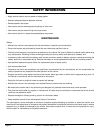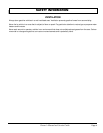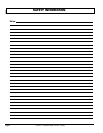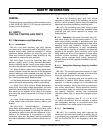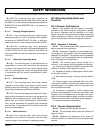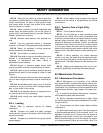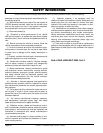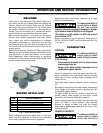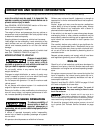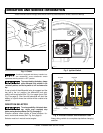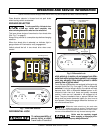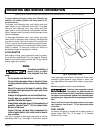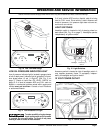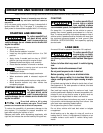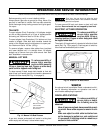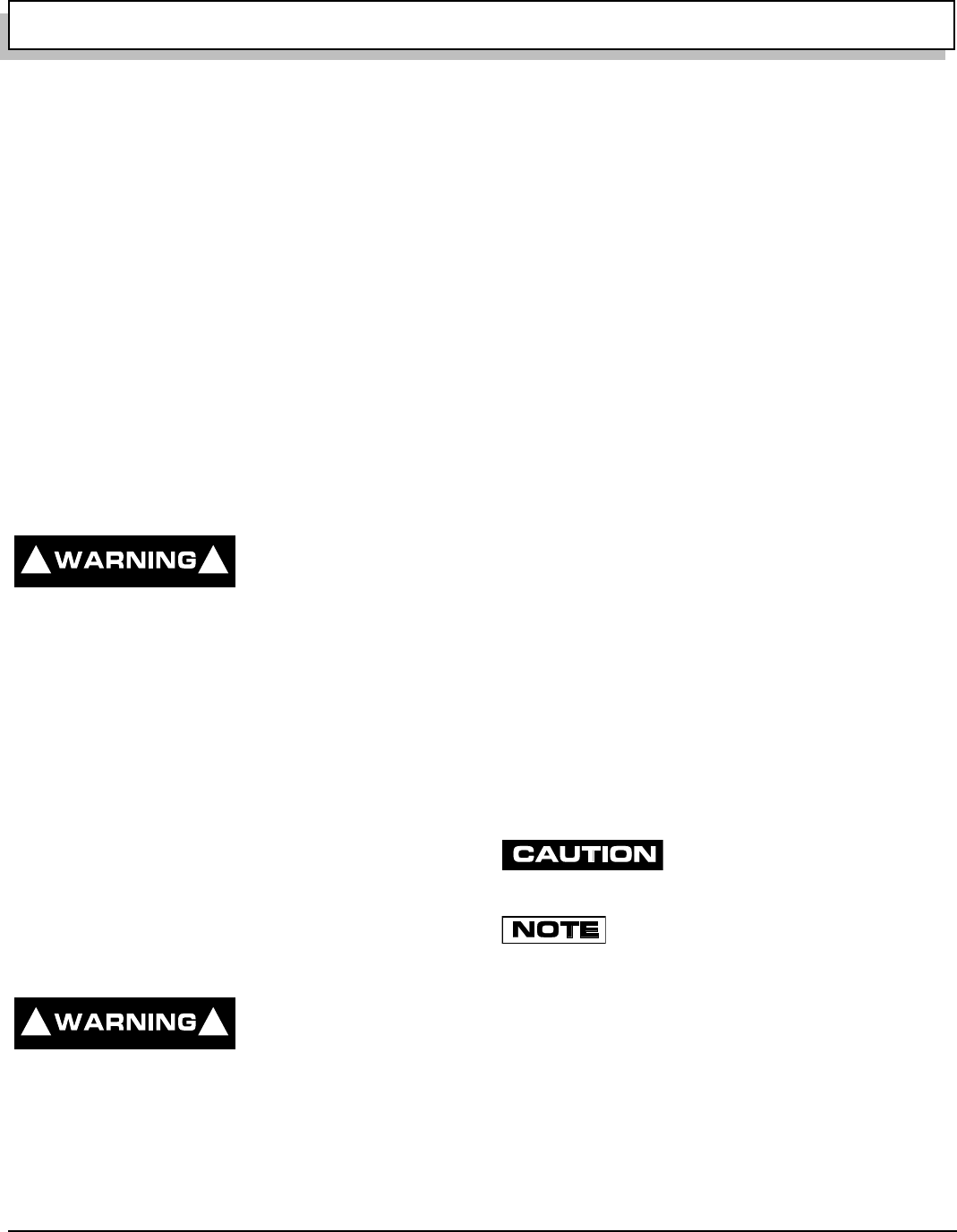
OPERATION AND SERVICE INFORMATION
Page 2
Owner’s Manual and Service Guide
Read all of manual to become thoroughly familiar with this vehicle. Pay particular attention to all Notes, Cautions and Warnings
ways the vehicle may be used, it is important the
operator consider any potential hazards before use to
prevent serious injury or death.
See GENERAL SPECIFICATIONS section of this man-
ual for load and seating capacity.
Never carry passengers in load bed.
The weight of driver and passenger plus any options or
accessories must be deducted from total payload rating
to determine load bed capacity.
Stopping distance increases as vehicle load increases.
Load weight can be misleading. Loads consisting of dry
sand, fertilizer, sod, etc. will, when wet, grossly overload
vehicle and increase potential for roll over and vehicle
damage.
Towing a loaded trailer reduces capacity of vehicle load
bed. (Ref. TOWING A TRAILER on page 12)
MODIFICATIONS TO VEHICLE
Changes to weight distri-
bution or center of gravi-
ty may make vehicle
unstable or prone to roll over which could result in
injury or death to operator or passenger.
Do not modify vehicle in any manner that will change
weight distribution.
Changes to weight distribution or center of gravity may
make it unstable or prone to roll over which could result
in injury or death to operator or passenger.
Do not tamper with governor. It is set for maximum safe
vehicle speed.
Do not tamper with exhaust system. It is matched with
engine for optimum performance.
Removal of muffler or other modifications to exhaust sys-
tem will: annoy others, not improve performance of vehi-
cle, increase possibility of starting a fire.
COMMON SENSE OPERATION
To reduce possibility of
severe injury or death to
operator, passenger or
bystanders, do not operate vehicle improperly and/or
irresponsibly.
If vehicle is operated improperly and/or irresponsibly,
severe injury or death to operator, passenger or bystand-
ers can occur.
All operators should possess a valid driver’s license.
Children may not have the skill, judgement or strength to
operate this or similar vehicles and should not be permit-
ted to do so.
Alcohol, drugs and many over-the-counter medications
reduce ability of driver to operate vehicle safely. Always
review side effects of any medication with a doctor or
pharmacist before operating vehicle.
If the vehicle is to be used in areas where steep slopes,
overhanging limbs or other adverse conditions may be
encountered, protective clothing and an approved motor-
cycle helmet are recommended for both operator and
passenger.
Plan carefully before using vehicle to go significant dis-
tances over questionable terrain. Remember that a one
hour drive may take many hours to walk out should vehi-
cle run out of fuel or be stranded by becoming stuck on
unsuitable terrain.
Respect private property and comply with all local laws
and regulations governing use of utility vehicles.
RUN-IN
Check for oil or fuel leaks that could have developed in
shipment from factory. Avoid full throttle starts and rapid
acceleration until engine has achieved operating temper-
ature.
All engines consume more oil than normal during the first
hours of operation. As internal moving parts are run-in,
oil consumption should gradually decrease until rate of
consumption stabilizes.
Check oil level See OIL LEVEL CHECK on page 18. Add
oil if level on dipstick is at lower hole.
Do not overfill engine. Too much oil
may cause smoking or allow oil to enter
the air filter enclosure.
Both the oil dipstick and fill cap must be in
place before operating the engine. Failure to
install the dipstick and fill cap will result in oil becoming contam-
inated and/or being discharged into the engine compartment.
Oil should be changed, while engine is warm, at end of
run-in period (Ref. Periodic Service Schedule on page
15).
! !
! !



